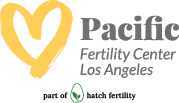How many eggs do women have?
Women are born with one to two million eggs stored in their ovaries, which are depleted over the woman’s reproductive years.
By the time of puberty, only around 300,000 remain. Of these remaining eggs, only about 500 will be ovulated during the reproductive lifetime of a woman. All remaining eggs gradually decrease at menopause.
The menstrual cycle
A woman’s menstrual cycle is a coordinated process that requires hormonal releases from the hypothalamus, pituitary glands, ovaries and the uterus.
Once a female reaches reproductive age, cycles of hormonal activity repeat about every 28 days. This cycle, also known as the menstrual cycle, is the hormonal activity that prepares a woman’s body for potential pregnancy.
The internal reproductive organs of the female include:
Vagina
The vagina is a woman’s canal that joins the cervix to the outside of the body, also known as the birth canal.
Uterus
The uterus is a hollow, pear-shaped organ-home to a developing fetus comprising the cervix and the corpus. The cervix is the lower part that opens into the vagina, and the corpus is the main body of the uterus which can expand to hold a developing baby. A channel through the cervix allows sperm to enter, and the menstrual blood to leave the body.
Fallopian tubes
These are narrow tubes attached to the upper part of the uterus and serve as tunnels for the eggs to travel from the ovaries to the uterus. Conception, or the fertilization of an egg by a sperm, typically occurs in the fallopian tubes. After fertilization, the embryo moves to the uterus and implants into the lining of the uterine wall.
Ovaries
Ovaries are small, oval-shaped glands located on both sides of the uterus which produce eggs and hormones necessary for conception and ovulation.
The follicular phase
The follicular phase starts on the first day of a woman’s period. During this phase, the hypothalamus produces a hormone called gonadotropin-releasing hormone (GnRH) to stimulate the release of follicle stimulating hormone (FSH) and luteinizing hormone (LH) from the pituitary.
Once FSH and LH are in the bloodstream, they travel to the ovaries to stimulate growth of 15-20 eggs in the ovaries, each in their own follicle (a fluid-filled structure that houses the eggs). These hormones also cause an increase in estrogen, which turns off the FSH to limit the number of follicles that mature. As this phase progresses, a follicle in one ovary will become dominant and continue to mature, while the others stop growing and die.
The ovulatory phase
The ovulatory phase starts around 14 days after the follicular phase begins. This is the midpoint in the menstrual cycle, with the next menstrual period beginning two weeks later.
During ovulation, the rise in estrogen from the dominant follicle triggers a surge in the amount of LH produced by the brain, causing the dominant follicle to release its egg from the ovary. Then, an egg is released (ovulation) and is captured by the fallopian tubes. During ovulation, the uterine lining thickens to prepare for implantation and fertilization.
The luteal phase
The luteal phase begins right after ovulation. Once the egg is released, the empty follicle develops into a new structure called the corpus luteum. This secretes the hormone progesterone, which prepares the uterus for a fertilized egg to implant.
If a man’s sperm has fertilized the egg (conception), the fertilized egg (embryo) will travel through the fallopian tube to implant itself in the uterus. This marks the beginning of pregnancy. If the egg is not fertilized, it passes through the uterus and the lining of the uterus breaks down and sheds, beginning the next menstrual period.
Note: For women who have abnormal ovulation or irregular menstrual cycles, it may become difficult to become pregnant. If this applies to you, we recommend scheduling an appointment to review your medical history and conduct testing.
Ovulation and Menstruation
Ovulation and Menstruation overview
Westwood Location
10880 Wilshire Blvd, Ste 300
Los Angeles, CA 90024
Call Us: (310) 564-9194
Glendale Location
1818 Verdugo Blvd, Ste 402
Glendale, CA 91208
Call Us: (310) 564-9194




